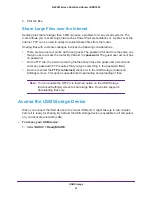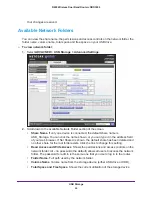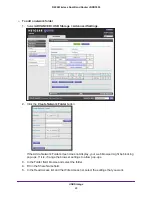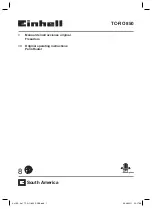
Security
71
N600 Wireless Dual Band Router JNDR3000
3.
Click the
Delete Keyword
button.
4.
Click the
Apply
button.
Your changes are saved.
You can exempt one trusted computer from blocking and logging. The computer you exempt
must have a fixed IP address.
To specify a trusted computer:
1.
Select
ADVANCED > Security > Block Sites
.
2.
In the Trusted IP Address field, enter the IP address.
3.
Click the
Apply
button.
Your changes are saved.
Block Services (Port Filtering)
Services are functions performed by server computers at the request of client computers. For
example, web servers serve web pages, time servers serve time and date information, and
game hosts serve data about other players’ moves. When a computer on the Internet sends
a request for service to a server computer, the requested service is identified by a service or
port number. This number appears as the destination port number in the transmitted IP
packets. For example, a packet that is sent with the destination port number 80 is an HTTP
(web server) request.
The service numbers for many common protocols are defined by the Internet Engineering
Task Force (IETF at
http://www.ietf.org/
) and published in RFC1700, “Assigned Numbers.”
Service numbers for other applications are typically chosen from the range 1024 to 65535 by
the authors of the application. Although the router already holds a list of many service port
numbers, you are not limited to these choices. You can often determine port number
information by contacting the publisher of the application, by asking user groups or
newsgroups, or by searching.
The Block Services screen lets you add and block specific Internet services by computers on
your network. This is called service blocking or port filtering. To add a service to block, first
determine which port number or range of numbers are used by the application.
To block services:
1.
Select
ADVANCED > Security > Block Services
















































